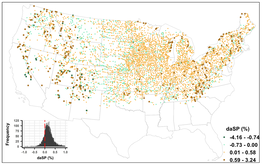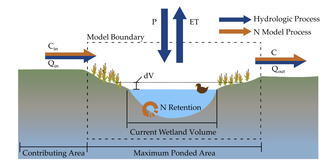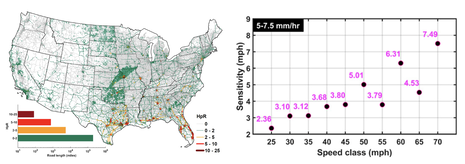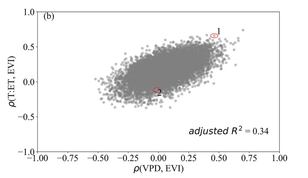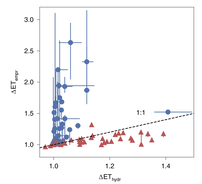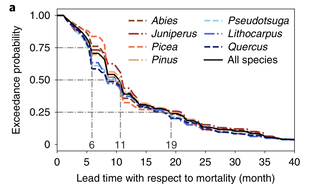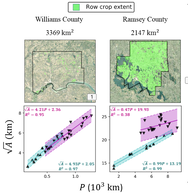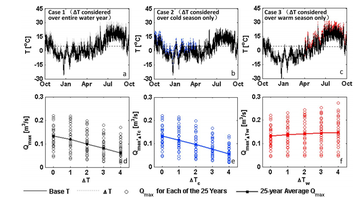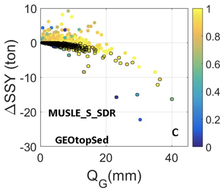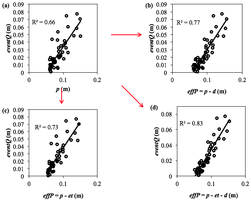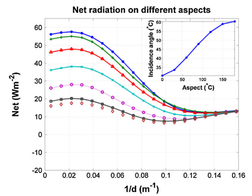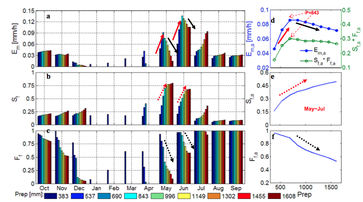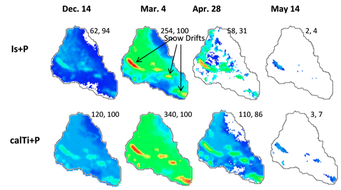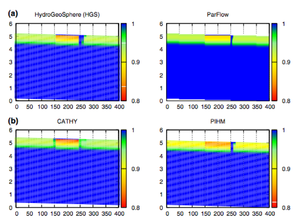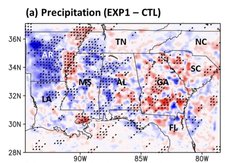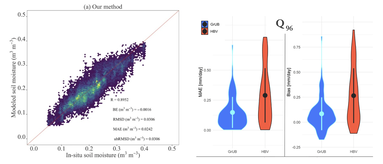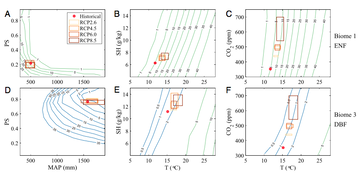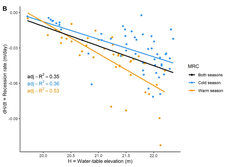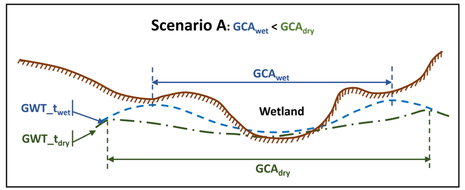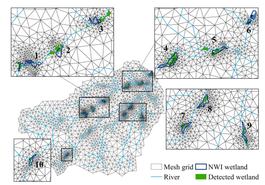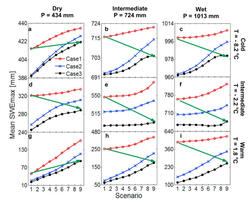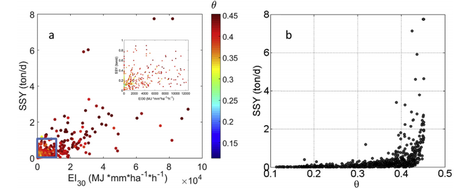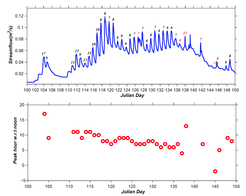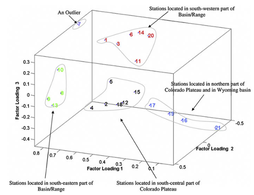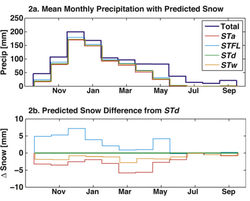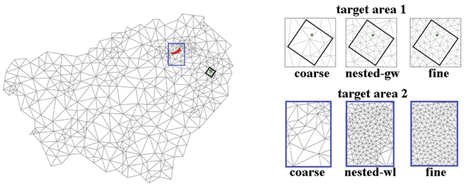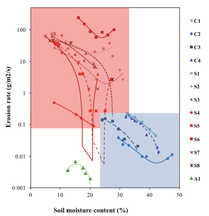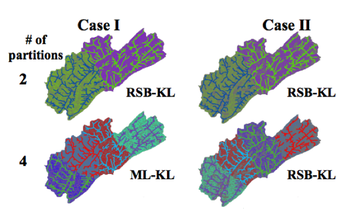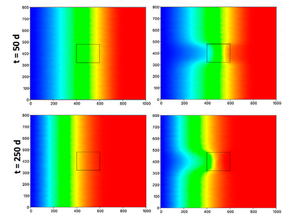
Email: mkumar4_at_ua_dot_edu
Phone: +1-205-348-0180 Address: 1064 Cyber Hall 248 Kirkbride Ln, Tuscaloosa, AL 35401 |
News:
- New: PhD and post-doc opportunities in Hydrology/Environmental data analytics available!! For PhD, apply here, for post-doc apply here. - Mar. 2024, Kaustubh's paper titled "Imprint of urbanization on snow precipitation over the continental USA" published in Nature Communications. Congratulations Kaustubh! - Dec., 2023, Paper titled "Water scarcity challenges across urban regions with expanding irrigation" accepted in ERL. Congratulations Lokendra! more... |
Mukesh is an integrated hydrologist. Together with his research group, he delves into the study hydrologic processes and their interactions in different parts of the hydrologic continuum, viz., subsurface, surface, snow, plants, and atmosphere. Their overarching research goal is to to improve the prediction and understanding of hydrologic processes, and better assess the impacts of water availability and quality on people and the environment. To this end, his recent research spans across the following three themes:
(a) Enhancing hydrologic understanding (e.g., ESR22, ERL22, WRR22, ERL21, HP20, NCC20, HP19, JHM16, EMS16, JHM15, JGR14, JGR13, AWR13);
(b) Advancing hydrologic predictions through identification of limitations in current prediction frameworks (e.g., WRR22, SREP19, SREP18, HP19, JH19, HP18, AWR13, JGR16, AWR12), and subsequently upgrading them (e.g., PIHM, VZJ09, EMS16, PNAS17, JHHE15, EMS14).
(c) Hydrologic impact assessment of geoenvironmental change on people (ERL24, GRL23, CC19, HP17), and environment [both natural (e.g., NC24, NCC19, WRR18, HESS17, PNAS17, WRR16, GRL16, GRL12) and built (e.g., PLoS22, WCS22)].
Biography: Mukesh's Bio
Focus Areas: Integrated Hydrology, Hydrologic Processes, Watershed Hydrology, Snow Hydrology, Ecohydrology, Wetlands, Numerical Modeling.
Research Sponsors: ALDOT, NASA, NOAA, NSF, NVIDIA, USGS.
----------------------------------------------------------------------------------------------------------------------------------------------------------------
Selected Projects:
(a) Enhancing hydrologic understanding (e.g., ESR22, ERL22, WRR22, ERL21, HP20, NCC20, HP19, JHM16, EMS16, JHM15, JGR14, JGR13, AWR13);
(b) Advancing hydrologic predictions through identification of limitations in current prediction frameworks (e.g., WRR22, SREP19, SREP18, HP19, JH19, HP18, AWR13, JGR16, AWR12), and subsequently upgrading them (e.g., PIHM, VZJ09, EMS16, PNAS17, JHHE15, EMS14).
(c) Hydrologic impact assessment of geoenvironmental change on people (ERL24, GRL23, CC19, HP17), and environment [both natural (e.g., NC24, NCC19, WRR18, HESS17, PNAS17, WRR16, GRL16, GRL12) and built (e.g., PLoS22, WCS22)].
Biography: Mukesh's Bio
Focus Areas: Integrated Hydrology, Hydrologic Processes, Watershed Hydrology, Snow Hydrology, Ecohydrology, Wetlands, Numerical Modeling.
Research Sponsors: ALDOT, NASA, NOAA, NSF, NVIDIA, USGS.
----------------------------------------------------------------------------------------------------------------------------------------------------------------
Selected Projects:
|
Can urbanization impact snow vs. rain partitioning? (@NC24)
Parsimonious methods to obtain evapotranspiration partition: When and where are they effective? (@WRR22)
Do existing land surface models appropriately account for the relative role of soil moisture and vapor pressure deficit on evapotranspiration? (@NCC20)
Can we predict forest mortality much before the symptoms (such as foliage discoloration or leaf fall) appear? (@NCC19)
How is annual streamflow peak from snow dominated watersheds affected by climate warming? (@GRL16)
How does antecedent soil moisture and evapotranspiration affect flood response to hurricane storms? (@JHM15)
Is there an optimal tree density that minimizes seasonal net radiation on the forest floor? (@JGR13A ; JGR13B)
Can annual soil evaporation from snow dominated watersheds decrease with increasing annual precipitation? (@AWR13)
How do representations of snow melt and accumulation processes affect distributed hydrologic response? (@AWR13)
How does coupling strategy affect overland and subsurface flow simulations (@WRR14)
|
How forest mortality risks will be affected by changes in precipitation, temperature, relative humidity and CO2? (@PNAS17)
How to correct for groundwater recharge from Water Table Fluctuation method in cases of evapotranspiration from groundwater (@WRR22)
Why location of groundwater-fed wetlands can still be predicted using topography-based indices (@HP19)
Can the inter-annual groundwater dynamics of inland wetlands be predicted by only using widely-available precipitation and potential evapotranspiration data? (@WRR16)
Can more extreme precipitation regime negate the impact of climate warming on seasonal snow peak? (@GRL12)
How well can rainfall erosivity and soil moisture explain the daily suspended sediment yield from watersheds? (@EMS16)
How does groundwater and snowpack depth affect the diurnal peak time of streamflow from snow dominated watersheds? (@JHM16)
Is seasonal net radiation in the forest gap larger or smaller than rest of the forest? (@JGR14)
What are the dominant modes of precipitation, temperature and streamflow in Colorado River Basin (@JofH09)
Should the precipitation phase be determined based on thresholds of air temperature, dew point temperature, or wet-bulb temperature? (@AWR13)
Can nested discretization reduce the time needed for hydrologic model calibration and simulation, while ensuring similar accuracy? (@SREP18)
How does soil moisture impact erosion (@ESR22)
|

